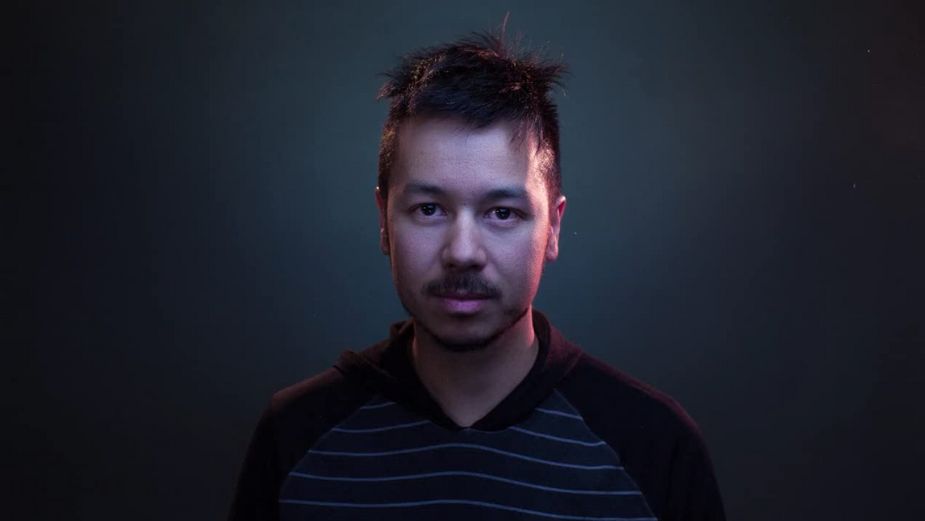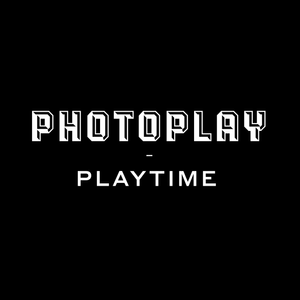
Dropbear talks About Directing With Crafts to Find a Viewer’s Heart

So why “Dropbear”?
“It was my name when I DJ’d,” explains Jonathan “Jono” Chong, a slightly sheepish smile crawling up his face.
The award-winning director has had a curious path to getting where he is now. He came from DJing, from graphic design, and from a love of what he calls “craftism” - an aesthetic of homemade and found objects being repurposed to tell a story. It’s not the standard route of most directors; people who fall in love with cameras and light and aspect ratios before anything else. But Dropbear’s made it work for him.
He’s won multiple awards for his animated and short work over a 10-year career, and now, for Photoplay/PLAYTIME produces some of the most eye-catching, visually inventive commercials in Australia.
“My big influences were all animators of that sort of style,” he explains. In particular, he cites the works of Adam Pesapane (known as PES); Laika studios, and Jan Švankmajer as major touchstones for his own work.
The aesthetic of these stop motion masters immediately stuck Jono. It lodged somewhere in the back of his mind, and he’s been working hard to put his own spin on their work ever since.
“I think, if you get the look right with those sorts of found objects, there’s an innate wow factor to it. It just looks so different, so striking.”
There’s something else too.
“A sense of nostalgia. For me, using familiar, comfortable objects like that - it’s a way to get back to a time when things were simpler. Being a kid again is quite playful. It’s not always good to dwell on the past, but it is good to revisit.”
In the spirit of revisiting, we sat with Dropbear to chat about his career, his approach, his goals, and his art.
LBB> How do you approach creating a treatment for a spot?
Dropbear> I usually begin with some visual research and pull together some reference images and videos that inspire and write some top-line notes. It’s also very helpful to ask lots of questions in the creative kick-off briefing with the agency to really understand the essence of the project. From there, I think of ways in which I can enhance the concept and bring something new and fresh to the table. Then, it’s a matter of writing a compelling treatment that outlines my approach and giving my own twist on the creative. Depending on the project, I’ll sometimes create style frames or concept art or even test footage.
LBB> For you, what is the most important working relationship for a director to have with another person in making an ad? And why?
Dropbear> Making an ad is a team effort and everyone plays an integral part, but if I’d have to pick the most important for me, it would be the producer, cinematographer and production designer. Having a good producer who is aligned with your vision and has your best interests at heart makes your job as director so much easier. They’re the link between the agency and director so good communication is also key. I’m lucky at Photoplay/Playtime to have some of the best producers in the industry.
As I’m a craft director, it’s important to have a cinematographer who knows how to capture that particular style of ad. I’m often working with miniatures and animating in stop motion so it’s important to have a DOP who understands the technical side of these filmmaking techniques. I’ve collaborated with Simon Higgins on numerous projects as he is a specialist stop motion cinematographer who knows how to light and lens miniatures, models and for VFX.
Lastly, I couldn’t do my job without a production designer who has the skills and team to build all the amazing sets and models that I often use in my productions. From miniature cars and houses, to puppets made from rubbish, to large art-directed and stylised set pieces, the production designer brings all that together in collaboration with myself, the cinematographer and producer.
LBB> What type of work are you most passionate about? Is there a particular genre or subject matter or style you are most drawn to?
Dropbear>I love hand crafted, in-camera projects. I come from a design background so a lot of the work I do is highly art directed, has a lot of colour and utilises practical effects and a lot of stop motion animation. I like to animate food and inanimate objects and products.
I find that a lot of clients like to show the actual product in a commercial and using stop motion to bring it to life is a really creative and fun way to showcase it. You have a lot of control over how the product looks and moves when using stop motion, so it can be a great solution for many types of brands. I also like working with actors and how they can be incorporated into my visual style. So that usually involves creating characters with inventive costume design and combining them with stop motion elements.
LBB> What misconception about you or your work do you most often encounter and why is it wrong?
Dropbear>The misconception about me would be that as a stop motion animation director I don’t animate myself. People think that I’ll have a team of animators that I direct and tell what to do, but they’re surprised when I turn up to set and I actually animate myself. On bigger productions, it’s not practical to do all the animation myself and I do work with other animators to help get the job done.
LBB> What’s the craziest problem you’ve come across in the course of a production – and how did you solve it?
Dropbear> A lot of my work involves problem solving, like how do I make a pair of shoes walk by themselves. Or how do I make a mess monster out of clothes and then make it tidy up into draws. One problem that comes to mind on a recent job was how to make a group of five toys race along the curb of a street.
We had a large Barbie camper Van, a T-Rex, a Lego helicopter, a phone on wheels and a mini Lego race car. All these toys were of various sizes so we first had to figure out how to fit them all in frame so the audience could see them clearly. We ended up building a conveyor belt road surface complete with a fake concrete curb. The toys with wheels were then attached to a fishing line on a rod out of frame and placed on the road. When the road surface was pushed along under the toys their wheels would turn and it looked like they were actually racing along. The curb moving in the background gave the illusion of them travelling forward. We then shot the T-Rex and helicopter as separate plates and comped them in, plus added in a deep background.
LBB> How do you strike the balance between being open/collaborative with the agency and brand client while also protecting the idea?
Dropbear> I always like to bring my own ideas to the table when approaching a commercial and as a director I believe that’s my job. Sometimes those suggestions are taken on board and other times not. I guess you can’t be too precious about it and make decisions based on what’s best for the final outcome. It always depends on the job too. Sometimes, a brief will come in that needs a lot of input from me and other times it’s already set in stone and it’s a matter of just executing it. In the end it should be a collaborative process and that’s what I like about filmmaking.
LBB> What are your thoughts on opening up the production world to a more diverse pool of talent? Are you open to mentoring and apprenticeships on set?
Dropbear> There aren’t many of us stop motion craftsman directors in Australia. It’s a pretty niche genre, so I’m totally up for new talent to step into roles within the production industry.
I would be happy for anyone who is keen to learn the craft to come on set and shadow me as a director’s apprentice. You just need to have the right temperament and eye for detail that is needed for this type of film making.
LBB> Your work is now presented in so many different formats - to what extent do you keep each in mind while you're working (and, equally, to what degree is it possible to do so)?
Dropbear> It depends on the project and what’s been briefed in. Some jobs are mobile-first so we need to shoot for different aspect ratios such as 9:16 and 1:1 for socials. It can be challenging to accommodate for all the various formats, so if the budget and schedule allow, we shoot set-ups specifically for each aspect ratio. Otherwise, we get creative and frame a master shot that can account for all formats. This is only possible due to the advancement in camera resolutions that can now shoot up to 8k.
LBB> Which pieces of work do you feel really show off what you do best – and why?
Dropbear> These four:
Earned Here, Taxed Here: Treasury
The complex concept of Australian corporate tax laws was distilled into a simple and clever script that consisted of a large wooden map of Australia upon which a custom marble run was made to represent the economy and tax system. The marble run was designed and constructed from scratch using CNCed hardwood, aluminium, perspex and plywood. Each element was hand painted, stained, sand-blasted and weathered in accordance with the overarching colour palette and art direction.
A precise motion control robot was used to shoot the spot. This gave the ability to follow the balls around the tracks and get the camera over the set to achieve graceful camera moves to tell the story. It was an ambitious production to achieve in such a tight schedule as everything had to be made by hand and the mechanical loopholes and track system needed to work perfectly on the shoot day.
Thins: Abbott's Village Bakery
In this spot, we see AVB Sandwich Thins and ingredients brought to life with stop motion animation. The focus was on the playful ingredients interacting with the bread, emphasising the lightness and showing off the softness and graininess. Shot over 12 hours daily using 3 stop motion units.
Little Things: DCS
This was a creative concept that was different from the usual messaging within the sector. It comprised four miniature custom set designs, 64 Individual 3D printed characters all hand painted, and shot on a seven-axis motion control camera robot.
Little Bodies, Big Potential: Blackmores
A combination of live action and stop motion, using custom built sets and models to promote Blackmores Superkids gummies. They say never working with kids and animals, but it all came together seamlessly. Lots of colour and energy in this spot which is something I love to imbue into my work.













